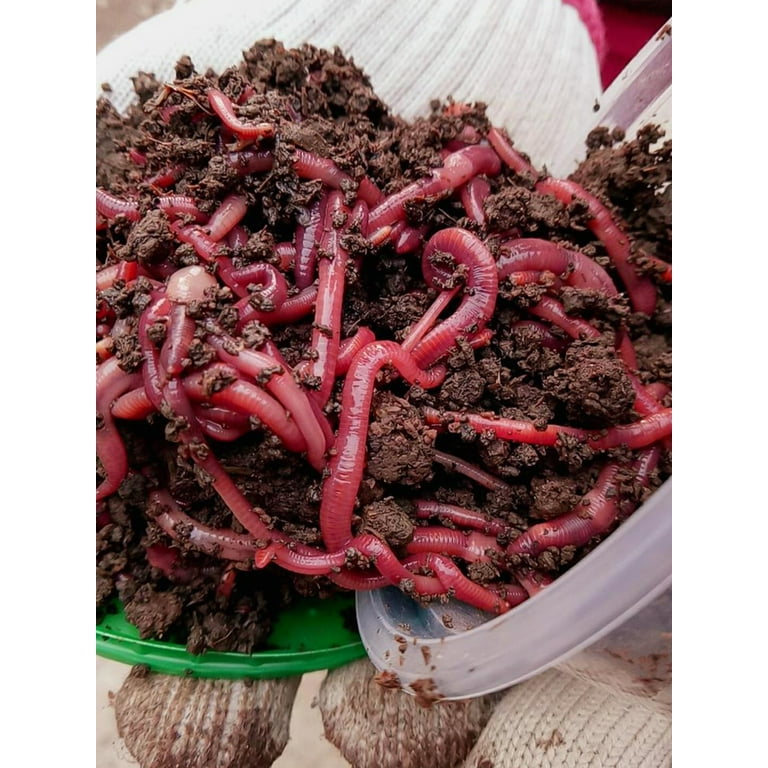Unlock the Benefits of Red Wiggler Composting for Your Organic Garden
Unlock the Benefits of Red Wiggler Composting for Your Organic Garden
Blog Article
Checking Out the Devices of Red Wiggler Composting: A Comprehensive Overview to the Refine and Its Positive Impact on Sustainable Gardening Practices
The detailed mechanisms of red wiggler composting, utilizing the one-of-a-kind physiology of Eisenia fetida, offer a compelling method for boosting lasting gardening practices. As city gardening gains traction, recognizing the subtleties of this composting technique becomes significantly appropriate.
Comprehending Red Wigglers
Red wigglers, clinically referred to as Eisenia fetida, are a types of earthworm highly pertained to for their efficiency in composting natural waste. These worms prosper in nutrient-rich environments, specifically in rotting organic issue, making them optimal for vermicomposting systems - Red Wiggler Composting. Characterized by their reddish-brown pigmentation and fractional bodies, red wigglers are smaller than common earthworms, commonly determining in between three to four inches in length
Their special physiological qualities boost their composting abilities; for circumstances, they possess a high reproductive price, allowing populations to increase quickly under ideal problems. Red wigglers consume organic product, simplifying via their digestive system systems, which leads to nutrient-rich spreadings that act as an outstanding organic plant food. Their starved appetite enables them to process large volumes of food waste successfully, considerably minimizing garbage dump payments.
Along with their composting expertise, red wigglers play a crucial role in dirt health and wellness. Red Wiggler Composting. They aerate the dirt and help with the decay of raw material, more enriching the soil ecological community. Understanding the characteristics and environmental benefits of red wigglers is important for any person looking to implement sustainable horticulture practices via effective composting techniques
The Composting Refine
The composting procedure involves breaking down organic products into nutrient-rich compost, a job that red wigglers succeed at as a result of their specialized gastrointestinal systems. These worms consume food scraps, yard waste, and other raw material, transforming them into important garden compost via a collection of biological and chemical processes.
Initially, the raw material is combined with bedding materials such as shredded paper or dried fallen leaves, producing an optimum atmosphere for the worms. As the red wigglers ingest this blend, they break it down via their intestine, where bacteria even more decay the product. This process produces warmth, advertising microbial activity, which accelerates decay.

Advantages of Red Wiggler Composting
Several gardeners and eco-conscious people recognize the numerous advantages of red wiggler composting, making it a prominent selection for efficient waste monitoring. One of the primary benefits is its capability to significantly minimize natural waste in landfills - Red Wiggler Composting. Red wigglers efficiently damage down kitchen scraps and other eco-friendly materials, changing them into nutrient-rich vermicompost that enhances dirt health
Additionally, red wiggler composting enhances soil framework and fertility. The resulting vermicompost is including advantageous bacteria, which advertise plant growth and improve nutrient retention. This all-natural plant food not just supports sustainable horticulture practices but likewise lowers dependence on chemical fertilizers, promoting a much healthier community.
Furthermore, red wiggler composting is a space-efficient technique, making it excellent for urban gardeners with minimal room. The procedure can be Get More Info conducted indoors or outdoors, permitting year-round composting no matter of environment conditions. Moreover, red wigglers are low-maintenance microorganisms that call for very little treatment, making them obtainable for amateur garden enthusiasts.
Fundamentally, the benefits of red wiggler composting expand past waste decrease; they add to healthier soils, lasting gardening practices, and environmental stewardship, positioning it as a useful practice in contemporary cultivation.
Best Practices for Composting
For effective red wiggler composting, adhering to finest practices is essential to maximize effectiveness and make certain a productive atmosphere for these worms. This balance promotes optimum disintegration and improves the worms' wellness.
Next, display moisture degrees, going for a moist, sponge-like uniformity. Excessively damp conditions can bring about anaerobic decomposition, while extreme dry skin may visit this page hinder worm task. Additionally, guarantee appropriate aeration by turning the garden compost routinely, which assists protect against compaction and enables adequate oxygen flow.
Temperature level is an additional crucial aspect. Keep a variety of 55 ° F to 77 ° F(13 ° C to 25 ° C) to advertise worm task and microbial development. Finally, avoid presenting meat, dairy, and oily foods, as these can attract insects and develop smells.
Enhancing Lasting Gardening
Sustainable gardening embodies an alternative technique that harmonizes environmental principles with useful horticulture methods. By integrating techniques such as red wiggler composting, gardeners can substantially boost their methods, fostering an extra durable ecological community. Red wigglers, renowned for their reliable decomposition capacities, convert organic waste into nutrient-rich garden compost, thereby enriching the dirt without counting on chemical plant foods.
Applying lasting gardening techniques, such as plant turning, buddy planting, and mulching, further complements the benefits of composting. These practices not only boost dirt structure and fertility yet likewise promote biodiversity, attracting advantageous insects and microorganisms that add to grow health and wellness. Utilizing go to website native plants can decrease water consumption and lessen maintenance, aligning with water preservation efforts.

Conclusion
In verdict, red wiggler composting stands for an important technique for enhancing sustainable horticulture techniques. Eventually, the fostering of red wiggler composting can dramatically contribute to environmentally friendly gardening, profiting both city and amateur garden enthusiasts in their farming initiatives.
The detailed mechanisms of red wiggler composting, using the distinct physiology of Eisenia fetida, provide a compelling avenue for enhancing lasting horticulture methods. Comprehending the attributes and environmental benefits of red wigglers is vital for any individual looking to apply lasting gardening practices through reliable composting approaches.

In final thought, red wiggler composting represents an essential technique for enhancing lasting horticulture practices. Inevitably, the adoption of red wiggler composting can significantly add to environmentally friendly horticulture, profiting both metropolitan and novice garden enthusiasts in their cultivation initiatives.
Report this page